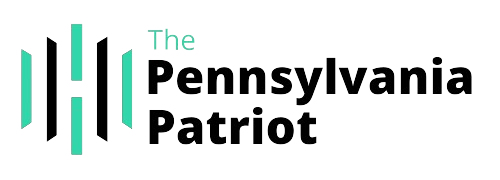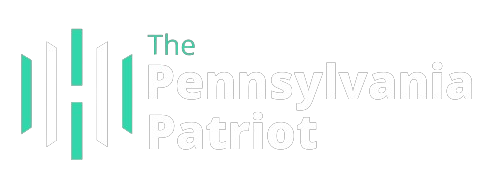The state Capitol building in downtown Harrisburg, October 14, 2025. (Photo by Jessica Kourkounis for the Pennsylvania Capital-Star)
Pennsylvania’s 2025-2026 budget includes a number of changes to K-12 school policy and funding.
They rely primarily on increasing cybersecurity oversight of charter schools, increasing the amount of money spent under the state adequacy formula, and recruiting and retaining teachers amid shortages across the commonwealth.
Although most of the policy changes are relatively minor, public education advocates called the budget a positive step in the right direction.
“While the delayed budget makes it difficult for public schools to plan and operate, this agreement shows what is possible when our leaders prioritize students and work together to meet Pennsylvania’s constitutional obligation to provide a ‘thorough and efficient’ public education system,” said a statement from PA Schools Work, a coalition of organizations advocating for Pennsylvania public schools.
Get our top stories delivered straight to your inbox every morning. Sign up now for the Pennsylvania Capital-Star Morning Guide.
Financing and supervision of the Cybersecurity Charter
Some of the biggest education policy changes in the budget involve cyber charters, which are privately operated and paid for by taxes and which students can attend remotely via webcam.
Cyber cards have come under intense scrutiny in Pennsylvania by officials from both parties. A February report by GOP state Auditor General Tim DeFoor examining five cybersecurity charters found that they collected enormous amounts of money and spent it in ways that did not appear to be tied to educational outcomes or opportunities.
Generally, tuition at cyber charter schools comes from the public school districts where the students live. This situation remains unchanged, but public schools will now be able to deduct a larger amount from the total amount they would have to pay per student.
The Legislature estimates the savings for public school districts across the state will be approximately $178 million.
The move was a compromise with lawmakers, most of them Democrats, and Gov. Josh Shapiro, who had called for capping cyber tuition at $8,000 per student.
“This is a step in the right direction and a very welcome step,” said Susan Spicka, executive director of Education Voters PA, who has long been a supporter of cyber charter reform.
A number of policies will also be implemented to boost accountability for cybersecurity cards.
One of them is an attempt to control absenteeism in mostly remote schools. The new policy will prevent students from public schools with high absenteeism rates from transferring to cyber studies unless a judge determines it is in their best interest.
To be able to assess attendance, students will need to be observable via webcam during synchronous classes – real-time lessons.

Cyber charters will also be required to conduct mandatory weekly student health checks. Teachers will also be required to undergo training in recognizing the signs of violence against children.
The movements are happening death of one of the cybernetics students following severe violence at home, the symptoms of which were not reported by teachers. This brought the disciples’ family to this conclusion file a wrongful death lawsuit against her school.
The budget also introduces a policy to make it easier for public school districts to challenge paying online tuition to students who are no longer residents.
House Education Committee Chairman Peter Schweyer (R-Lehigh) says the move was in response to reports that public school districts faced a cumbersome process for disputing tuition payments for students who transferred during the school year.
“The goal is not to beat cyber schools,” Schweyer said of the reforms. “We want to make sure students are learning and taxpayers are getting what they pay for.”
Improving the adequacy formula
Last year, lawmakers created a new formula for the adequacy of giving money to the state’s least-funded school districts. The decision was in response to a Commonwealth Court ruling that found the state’s public school funding program unconstitutional.
Overall, the adequacy formula, which takes into account factors such as a district’s poverty level and the number of students learning English as a second language, remains unchanged this year. However, over $500 million in additional dollars will be distributed through it.
Most of the funding was part of a planned boost in funding compared to last year. When creating this formula, lawmakers planned to boost spending under it each year until the total reached about $4.5 billion after nine years.
But despite earlier opposition from some Republicans who said they believe too much money is being allocated to a school system with sinking enrollment, the adopted budget will provide even more money under the adequacy formula than what Gov. Josh Shapiro asked for in his February budget address.
That’s because lawmakers established a $50,000 minimum distribution for all school districts, which means even districts that otherwise wouldn’t receive any money under the adequacy formula will now receive $50,000 each.

This year, more than 130 of 500 public school districts will receive the minimum amount.
“We know that all school districts have some additional needs, so we have set a minimum funding balance for all school districts of $50,000,” Schweyer said. “None of this harms any school districts, in fact it gives all school districts good space.”
Public school advocates welcomed the decision to boost funding under the adequacy formula, which faced an uncertain future during months of budget negotiations.
“With this budget, lawmakers confirmed that the Commonwealth remains on the path to a fully and equitably funded public education system,” said a joint statement from the Education Law Center and the Public Interest Law Center, two nonprofit organizations that participated in the lawsuit that led to the creation of the adequacy formula. “This is another step forward that must be followed by continued commitment and continued investment until every student in every community has the resources they need to learn and grow.”
Teacher recruitment and retention
The budget also establishes policies to lend a hand Pennsylvania schools recruit and retain teachers.
Current state is struggling with teacher shortageswith enormous numbers of people leaving the industry and the number of people entering it decreasing.
The policy implemented under the new budget is intended to make it easier for new teachers to enter the profession, including those who come from non-traditional backgrounds.
One of those long sought by the Pennsylvania State Education Associationincreases funding for scholarships for future teachers, which allows the state to pay student teachers for the time they spend in classrooms preparing for certifications.
Another new policy allows districts to hire teachers who have lost their certifications, working with them to lend a hand them become recertified.
According to Schweyer, the policy is intended to make it easier for former teachers who left the job to care for family or pursue another career to return to the classroom.
The budget also creates the so-called an experiential teaching certificate designed to accelerate the certification process for professionals who want to begin teaching in fields related to their work.

For example, a school district could hire a professional chemist as a high school science teacher. They would then receive an experience-based teaching certificate and have five years to complete their apprenticeship working as a teacher.
Other changes include a mandatory shift toward so-called evidence-based literacy education for teachers working with teenage children on reading skills.
Students in kindergarten through third grade will also be tested on their reading skills three times a year. If it turns out that a student cannot read correctly, parents will be notified. All schools will also be required to report annually to the Ministry of Education on the progress of their students.
The budget also includes a policy to boost the number of assessments a teacher can become certified to teach at any time.
$125 million will also be set aside for school facility repairs, including at least $25 million for the Solar for Schools program, as well as $100 million for school safety and mental health grants.
Enrolling in the FAFSA will also become a requirement for graduate students, intended to encourage more students to apply to colleges unless they choose to opt out.
“At the end of the day, it’s a really good product,” Schweyer said. “There is always more to do, but overall we are happy with where we ended up.”

